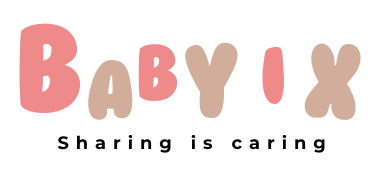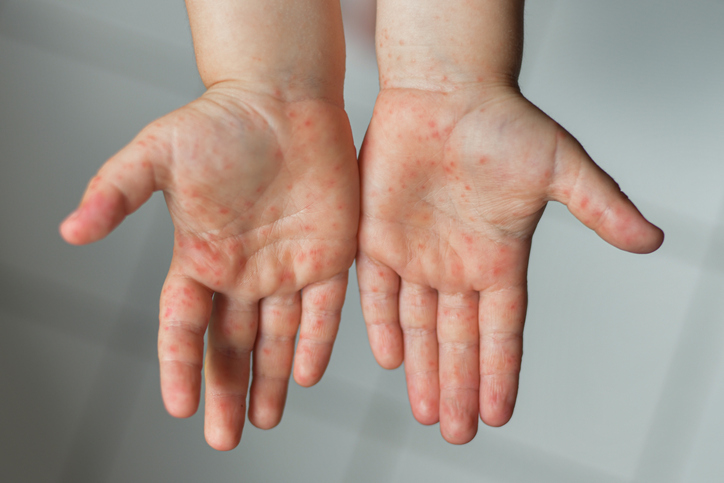Baby Teething Symptoms: Soothing Tips and Advice

It’s important to know the signs of baby teething to keep your infant healthy and comfortable. Spotting these symptoms can be tricky, but it’s key to giving your baby the right care. As a parent, you want the best for your child, and knowing about teething symptoms helps you soothe their pain.
Signs of teething in babies include being irritable, drooling a lot, and having swollen gums. By recognizing these symptoms, you can take steps to ease your baby’s discomfort. This article will help you understand baby teething symptoms better, giving you useful tips to support your child’s growth.
Key Takeaways
- Understanding baby teething symptoms is vital for your infant’s health and comfort
- Teething signs in infants can include irritability, drooling, and swollen gums
- Recognizing baby teething symptoms can help you soothe your child’s discomfort
- Awareness of teething signs in infants can reduce stress during the teething process
- Practical advice and guidance can help you support your infant’s growth and development
- Being informed about baby teething symptoms can help you make informed decisions about your child’s care
Understanding Baby Teething Symptoms
As a parent, knowing the baby teething timeline is key to caring for your infant. Teething can be tough for babies, and spotting teething signs in infants is vital. It usually starts around six months, but can begin as early as three months or as late as twelve months.
The time it takes for teething to finish varies. It can last about two years. During this time, babies get different teeth, each with its own teething signs in infants. Knowing the baby teething timeline helps parents prepare and ease their baby’s pain.
When Does Teething Usually Start?
Teething often begins with the lower front teeth, then the upper front teeth. The first to come out are usually the incisors, the front teeth. The baby teething timeline can differ, but most babies have all their teeth by two years old.
How Long Does Teething Last?
Teething can last for years, but the hardest part is usually the first year. As babies grow older, the teething signs in infants may fade. Yet, it’s important to keep an eye on their teeth and ensure regular dental care.
Common Age Ranges for Different Teeth
| Teeth | Age Range |
|---|---|
| Lower front teeth | 6-10 months |
| Upper front teeth | 8-12 months |
| Molars | 12-16 months |
| Canines | 16-22 months |
By grasping the baby teething timeline and spotting teething signs in infants, parents can offer the best care. This helps babies through this important developmental stage.
Early Signs Your Baby Is Teething
It’s important for parents to know the teething signs in infants to offer comfort and care on time. Baby teething symptoms can differ, but common early signs include drooling, irritability, and changes in appetite.
Other signs to watch for are:
- Drooling or excessive saliva production
- Irritability or fussiness
- Changes in appetite or refusal to feed
- Ear pulling or rubbing
- Gnawing or chewing on objects
Knowing these teething signs in infants helps parents spot when teething starts. This way, they can soothe their baby’s discomfort. Recognizing baby teething symptoms early makes the teething experience more comfortable for their child.
Being aware of these early signs lets parents take steps to ease their baby’s teething pain. This makes the teething process less stressful for both the baby and the parents.
| Teething Sign | Description |
|---|---|
| Drooling | Excessive saliva production |
| Irritability | Fussiness or crankiness |
| Changes in Appetite | Refusal to feed or changes in feeding patterns |
The Complete Baby Teething Timeline
Knowing the baby teething timeline is key for parents. It helps them get ready for each teething stage. Teething starts around 6 months and can last up to 3 years. Babies may need teething pain relief during this time, which can be helped in many ways.
The baby teething timeline breaks into three main parts:
- First Teeth (0-6 months): This stage starts with the first teeth coming in, usually the lower front ones.
- Middle Stage (6-12 months): Here, the upper front teeth and lower molars begin to appear.
- Final Teeth (12-24 months): The last stage includes the upper molars, canines, and second molars coming in.
Parents can use different teething pain relief methods during these stages. They can try gently rubbing the baby’s gums with a clean finger or give them teething toys.
By knowing the baby teething timeline and using the right teething pain relief methods, parents can ease their baby’s teething discomfort.
| Stage | Age Range | Teeth Erupted |
|---|---|---|
| First Teeth | 0-6 months | Lower front teeth |
| Middle Stage | 6-12 months | Upper front teeth, lower molars |
| Final Teeth | 12-24 months | Upper molars, canines, second molars |
Common Teething Discomfort Signs
Teething can be tough for babies. It’s key to know the signs of discomfort. Teething pain relief is a big concern for parents. They want to ease their baby’s pain.
Signs like fussiness, not wanting to eat, and being cranky are common. These baby teething symptoms can upset both babies and parents. But, there are ways to help.
Using teething toys, gentle gum pressure, and cold teething rings can help. It’s also important to watch for baby teething symptoms closely. This way, parents can help their babies get through this tough time.
- Offer a pacifier or let the baby suck on their thumb to provide comfort
- Use a cold, wet washcloth to rub against the gums
- Try using a teething gel or cream, but always consult with a pediatrician first
By using these tips and watching for baby teething symptoms, parents can ease their baby’s discomfort. This makes the teething process less stressful for everyone.
| Teething Symptom | Relief Method |
|---|---|
| Fussiness | Teething toys, gentle pressure to the gums |
| Refusal to feed | Cold teething rings, pacifiers |
| Irritability | Teething gels or creams, cold washcloths |
Understanding Teething-Related Health Issues
Teething can be tough for babies. It’s important to know about health issues that might happen. Teething fever is a worry for many parents. Some babies get a low-grade fever, but it’s key to tell it apart from other sicknesses.
A teething rash is another common problem. It’s usually harmless and can be soothed with gentle care. But, if it doesn’t go away or comes with other signs, see a pediatrician.

Knowing when to call a pediatrician is critical. If your baby shows these signs, get medical help:
- Fever above 100.4°F (38°C)
- Vomiting or diarrhea
- Refusal to feed or drink
- Excessive crying or irritability
Being aware of these issues and knowing when to get help ensures a smooth teething process for your baby.
Remember, every baby is different, and what works for one may not work for another. If you’re ever in doubt about your baby’s health, it’s always best to consult with a pediatrician for personalized advice and guidance.
Natural Remedies for Teething Pain
Many parents use natural remedies to help their babies with teething pain relief. Cold teething toys and massage are two effective teething remedies.
Some popular natural remedies for teething pain include:
- Cold teething toys, which can be chilled in the refrigerator to provide a soothing sensation
- Massage, which can help to reduce inflammation and ease pain
- Homeopathic remedies, such as chamomilla, which can help to calm and soothe the baby
It’s wise to talk to a pediatrician before trying new teething remedies. This is true if your baby has any health issues. The right teething pain relief can make your baby feel better and more relaxed.
According to the American Academy of Pediatrics, a teething baby may experience a range of symptoms, including drooling, irritability, and swollen gums. By using natural remedies, such as cold teething toys and massage, parents can help to alleviate these symptoms and provide their baby with much-needed relief.
| Remedy | Description |
|---|---|
| Cold Teething Toys | Chilled toys that provide a soothing sensation |
| Massage | Gentle massage that helps to reduce inflammation and ease pain |
| Homeopathic Remedies | Natural remedies, such as chamomilla, that help to calm and soothe the baby |
Safe Teething Products and Tools
When picking teething products for your baby, safety is key. A baby teething chart can guide you to the best options for your baby’s age and teething needs. Look for safe teething products that are non-toxic and designed to ease your baby’s gum pain.
When choosing teething products, consider these points:
- Avoid products with small parts that could be a choking risk
- Choose items that are easy to clean and sanitize
- Go for products that are BPA-free and phthalate-free
Choosing the Right Teething Toys
Teething toys can help soothe your baby’s sore gums. Pick toys that fit your baby’s age and teething stage. Look for ones made from safe, non-toxic materials. Teething rings, balls, and soft, chewable toys are good choices.
Safety Considerations for Teething Products
Be cautious with teething gels or topical anesthetics. Always read the instructions carefully. Also, talk to your pediatrician before trying new products. The FDA has approved several teething products that are safe for babies.
| Product | Age Range | Ingredients |
|---|---|---|
| Teething Ring | 0-12 months | BPA-free plastic |
| Teething Gel | 3-24 months | Topical anesthetic |
Oral Care During Teething
Oral care is key for babies, more so when they’re teething. Good oral hygiene stops infections and keeps teeth and gums healthy. Teething makes gums sore and teeth sensitive, making care even more important.
To keep up with oral care, start by gently wiping your baby’s gums with a soft cloth or toothbrush. When teeth come in, use a small, soft-bristled toothbrush and a tiny bit of toothpaste. Early dental visits are also vital.
Here are some tips for oral care during teething:
- Gently clean your baby’s gums and teeth with a soft cloth or toothbrush
- Use a small amount of toothpaste and avoid harsh chemicals
- Make a regular dental care routine, including daily cleaning and check-ups
By following these tips, you can help your baby have healthy teeth and gums, even with baby teething symptoms. Always ask your pediatrician or dentist for advice on oral care during teething.
Regular oral care can help prevent infections and ensure the health of your baby’s teeth and gums, even during the challenging teething process.
| Oral Care Tips | Benefits |
|---|---|
| Gently clean gums and teeth | Prevents infections and promotes healthy teeth and gums |
| Establish a regular dental care routine | Helps develop good oral hygiene habits and prevents oral health issues |
Diet Modifications for Teething Babies
When your baby is teething, changing their diet can help. Knowing the signs of teething is key. A good diet can ease the pain of teething.
Some foods can make teething less painful. Cold foods like yogurt or pureed fruits can help. But, spicy or hard foods can make things worse. It’s important to choose foods that are right for your baby during this time.
Foods to Offer
- Cold pureed fruits like apples or bananas
- Yogurt or cheese for their soothing properties
- Soft, mashed vegetables like carrots or sweet potatoes
Foods to Avoid
- Spicy or acidic foods that can irritate the gums
- Hard foods like nuts or crackers that can be a choking hazard
- Citrus fruits or juices that can be too harsh on the baby’s teeth and gums
By making these diet changes and watching for teething signs, you can help your baby. Always talk to your pediatrician before changing your baby’s diet.
With the right diet and patience, you can make your baby more comfortable while they’re teething.
| Foods | Benefits |
|---|---|
| Cold pureed fruits | Provide relief from teething pain |
| Yogurt or cheese | Soothe the gums and reduce inflammation |
| Soft, mashed vegetables | Easy to digest and gentle on the gums |
Managing Teething at Night
Teething at night can be tough for babies and parents. Teething pain relief is key for a peaceful sleep. Using a cold teether or a pacifier can help soothe a teething baby at night.
Here are some ways to manage teething at night effectively:
- Start a bedtime routine to tell the baby it’s sleep time
- Use white noise to block out any disturbing sounds
- Keep the room at a comfy temperature to avoid discomfort
Remember, every baby is unique. What works for one might not work for another. Teething pain relief methods may need to be adjusted for each baby’s needs.
By trying different strategies, parents can find what works best for their baby. This helps the baby sleep well and reduces stress from managing teething at night.
| Method | Description |
|---|---|
| Cold Teether | A teether that can be chilled in the refrigerator to provide a soothing sensation for the baby’s gums |
| Pacifier | A pacifier can help to calm the baby and reduce teething pain |
Conclusion: Supporting Your Baby Through Teething
Teething can be tough for babies, but you’re not alone. Many parents have been through it. With the right strategies, you can help your baby feel better.
Understanding teething symptoms and trying natural remedies can help. Choosing safe teething products is also important. This way, you can give your baby the comfort they need.
Every baby is different, so what works for one might not work for another. Be open to trying new things and don’t worry if it takes time. If you’re worried, always talk to your pediatrician.
With patience, love, and understanding, you can help your baby through teething. This will make them feel better and give you peace of mind too.






